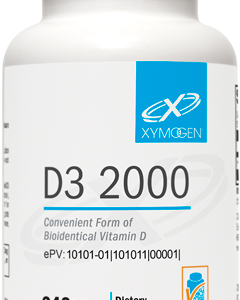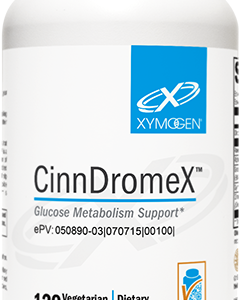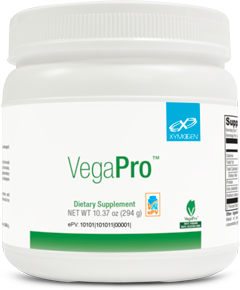Scientific Information/Data
Thiamin activates glyceraldehyde phosphate dehydrogenase (GAPDH). Decreased availability of this enzyme has been implicated in diabetes complications such as blindness, nerve damage, kidney failure, stroke and cardiovascular disease.[1] Thiamin repletion in the case of a six year-old girl with diabetes caused by a genetic mutation effecting thiamine transport demonstrated its benefits.[2] Thiamin deficiency may cause diabetic neuropathy by decreasing transketolase, needed for normal myelinization and thiamine monophasphatase, needed for primary sensory neuron function.*[3]
Niacin is required for lipid metabolism, tissue respiration and glycogenolysis. It may preserve and protect Beta cells.[4] Niacinamide improved insulin secretion in lean diabetics who had failed drug treatment.*[5]
Chromium and Biotin synergistically improve glucose tolerance.[6,7] Biotin, in large doses (5-15 mgs) enhances the effects of enzymes involved in glucose metabolism. One small study demonstrated reversal of diabetic neuropathy.[8] Chromium polynicotinate, preferred for its bioavailability and biological activity may increase insulin receptor sensitivity and enhance glucose transport. Anderson, et al. showed 1000 mcgs of chromium stabilized blood sugar in two months along with insulin and cholesterol level improvement.*[9]
Vanadyl Sulfate may reduce hepatic gluconeogenesis and “mimic” insulin’s effect.[10] In rats, vanadyl sulfate was also shown to alter the expression of genes dysregulated in diabetes.*[11]
Fenugreek Seed and its constituent, 4-isoleucine appear to directly stimulate insulin.[12] The combination of fenugreek with vanadium appeared to normalize altered membrane linked functions and GLUT4 distribution.[13] Fenugreek also lowered high serum cholesterol and triglycerides.*[14]
Bitter Gourd (aka. bitter melon) contains an insulin-like polypeptide shown to exhibit hypoglycemic effects[15] with an onset of action between 30-60 minutes and a peak effect at about 4 hours.[16] It is approved as an antidiabetic drug in China.*[17]
Gymnema sylvestre reduced fasting blood sugars, glycosylated hemoglobin (HbA1c) and glycosylated plasma protein levels and thus insulin requirements in Type 1 diabetics by reducing glucose absorption in the intestine, stimulating pancreatic beta cell growth and possibly increasing endogenous insulin secretion as suggested by an increase in C-peptide levels. Gymnema was shown to also reduce serum triglycerides, total cholesterol, VLDL and LDL.*[18]
*These statements have not been evaluated by the Food and Drug Administration. This product is not intended to diagnose, treat, cure, or prevent any disease.
References
1. Obrenovich ME, Monnier VM. Vitamin B1 blocks damage caused by hyperglycemia. Sci Aging Knowledge Environ. 2003 Mar 12; 2003 (10): PE6.
2. Viana MB, Carvalho RI. Thiamine- Responsive Megaloblastic Anemia, Sensorineural Deafness, and Diabetes Mellitus: A New Syndrome?, J Pediatrics, August 1978; 93(2): 235-238.
3. Frydl, V., Zavodska, H. Diabetic Polyneuropathy and Vitamin B1, Medwelt,1989;40:1484-6
4. Pozzilli, B. et al. Adjuvant therapy in recent onset type 1 diabetes at diagnosis and insulin requirement after 2 years. Diabete Metab.1995 Feb:21(1): 4709. [PMID: 7781843]
5. Polo, V. Saibene A., Pontiroli AE. Nicotinamide improves insulin secretion and metabolic control in lean type 2 diabetic patients with secondary failure to sulfonylureas. Acta Diabetol 1998;35:61-4
6. McCarty MF. High dose biotin, an inducer of glutokinase expression, may synergize with chromium picolinate to enable a definitive nutritional therapy for type II diabetes. Med Hypothese 1999 May;52(5):401-6
7. Singer GM, Geohas J. The effect of chromium picolinate and biotin supplementation on glycemic control in poorly controlled patients with type 2 diabetes mellitus: a placebo-controlled, double-blinded, randomized trial. Diabetes Technol Ther. 2006 Dec; 8(6): 636-43 [PMID:17109595]
8. Coggeshall JC, et al. Biotin status and plasma glucose in diabetes. Annals New York Academy of Sciences 1985; 447:389-929. www.naturaldatabase.com
10. Badmaev V. Vanadium: review of its potential role in the fight against diabetes; J Altern Complement Med, 1999; 5(3): 273-291
11. Willsky GR. Diabetes-altered gene expression in rat skeletal muscle corrected by oral administration of vanadyl sulfate: Physiol Genomics. 2006 Aug16;26(3):192-201. Epub 2006 May 9. [PMID: 16684804]
12. Sauvaire Y. et al. 4-hydroxisoleucine. A novel amino acid potentiator of insulin
secretion. Diabetes 1998; 47: 20610
13. Siddiqui MR et.al. Low doses of vanadate and Trigonella synergistically regulate Na+/K + -ATPase activity and GLUT4 translocation in alloxan-diabetic rats. Cell Biochem. 2006 Apr; 285 (1-2): 17-27. Epub 2006 Apr 19 [PMID: 16622606]
14. Newall CA, Anderson LA, Philpson JD. Herbal Medicine: A Guide for Healthcare Professionals. London, UK The Pharmaceutical Press, 1993
15. Sarkar S, Pranava M, Marita R. Demonstration of the hypoglycemic action of Momordica charantia in validated animal model of diabetes. Pharmacol Res, 1993;33(1)1-4
16. Raman A, et al. Anti-diabetic properties and phytochemistry of Momordica charantia L. (Cucurbitaceae). Phytomedicine 1996; 26
17. Jia W. Gao W, Tang L. Antidiabetic herbal drugs officially approved in China. Phytother Res 2003 Dec; 17(10): 1127-1134
18. Shanmugasundaram, E.R.B., Rajeswari, G., Baskaran K., Rajesh Kumar, B.R., Radha Shanmugasundaram, K., Kizar Ahmath, B. Use of gymnema sylvestre leaf extract in the control of blood glucose in insulin-dependent diabetes mellitus. J Etnopharmacol 1990;30:281-94
19. The Review of Natural Products by Facts and Comparisons. St. Louis, MO:Wolters Kluwer Co; 1999







Reviews
There are no reviews yet.